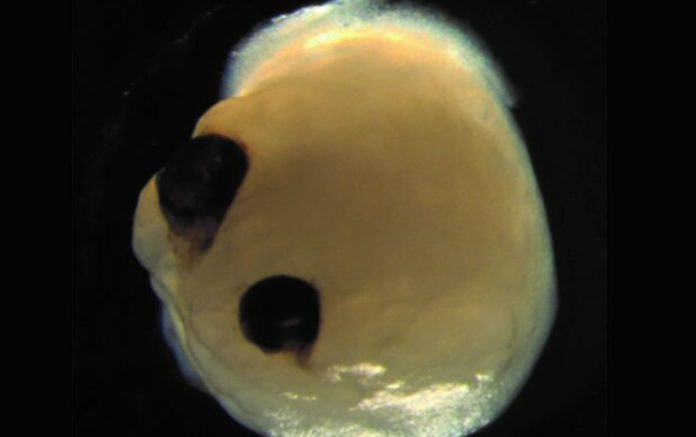German biologists have grown in the laboratory a brain organoid with eye rudiments that reacted to light.
The researchers talked about their achievement in Cell Stem Cell. In the future, such mini-eyes can be used to study ophthalmic diseases and test drugs.
The successful creation of in vitro models of human organs opens up new possibilities for studying their work and diseases. This is especially true for the brain – after all, most of the neurological research is carried out on the brain of mice. Miniature brain models created in vitro are called brain organelles.
They are grown from pluripotent stem cells in an environment that mimics the natural environment of the developing brain. The cells differentiate, and the end result is a pea-sized brain organoid.
Embryologists at the University Hospital Düsseldorf, led by Jay Gopalakrishnan, have taken a new step in the creation of brain organelles. They raised not only a model of the human brain, but also the eye bubbles on it – the rudiments of future eyes.
The latter began to develop spontaneously from day 30 and took their final form two months later. In the resulting eye vesicles, cells of the corneal epithelium and retinal pigment epithelium were found, and most importantly, they generated a nerve impulse.
The cells of the eye bladders responded to light with electrical activity, and the response was dose-dependent: light at 200,000 millluxes elicited a stronger response than 2,000 millluxes of light (p <0.00001).
Lab-grown bladders can aid in the study of inherited eye diseases as well as drug testing. In the future, scientists will have to work on extending the lifespan of the resulting brain organelles so that they can be used in research.
Biologists grow not only brain organelles but also heart organelles from stem cells. Recently, American scientists managed to grow a mini-heart, in which all the main types of heart cells were formed, as well as structures similar to the coronary vessels and chambers of the heart.
